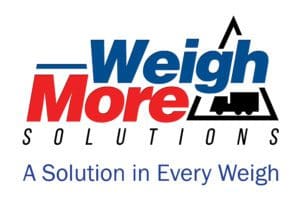7 Common Weighbridge Maintenance Mistakes and How to Avoid Them
Keeping your weighbridges in good condition requires knowing what not to do. Here are common weighbridge maintenance mistakes and how to avoid them.
Your weighbridges take a lot of beating. They’re exposed to dirt, water, rubbish, and all manner of external factors that might impact whether a heavy, large vehicle is correctly weighed.
No matter what industry you work in, be it mining, power, liquid, household goods, and so on, looking after your weighbridges is essential if you want them to last.
In light of that, we’re going to look at some of the most common weighbridge maintenance mistakes people make. In doing so, hopefully, you can avoid them and ensure your weighbridges remain accurate, reliable, and last you for many years to come.
There’s a lot to cover, so let’s dive straight in!
Background
Australia’s National Heavy Vehicle Regulator (NHVR) governs regulations around the weight permitted to travel on particular roads. These regulations protect public roads from being damaged.
There are different types of weighbridges used by businesses, above-ground, in-ground, and portable. What they all have in common is that they need looking after.
So here’s a few common maintenance mistakes and how to avoid them:
1. Inadequate Investment
Installing your weighbridge on the cheap and in less than favourable conditions means that external factors might interfere in the weighing process further down the line.
In other words, your weighing won’t be reliable. Invest in a dependable installation company to ensure long term benefits.
2. Irregular Inspections
By not factoring an inspection roster into your timetable, you risk faults and potential external factors that may impact its efficiency (dirt, dust, water, etc.) going undetected.
Ideally, you should schedule daily, weekly, and monthly weighbridge inspections. For example:
Daily and Weekly
Every day conduct a visual inspection of your pit and surface mounted weighbridges. See if any dirt or mud build ups might affect the accuracy of weighing.
Then, each week check your weighbridge’s mechanics by placing a vehicle on the weighbridge at the front, middle, and end of the platform and weighing it. Compare the data to earlier weeks to see if there are any differences.
If there are discrepancies, further mechanical maintenance may be required.
Monthly
Check that the weighbridge platform hasn’t moved, thoroughly wash the platform (ideally with a jet wash), and ‘zero’ the weighbridge, and repeat the front, middle, end test again.
Ensure there’s easy access to a water supply for a jet clean. A pump to drain excess water away will make maintenance a much simpler process.
Every Six Months
Twice a year, check for:
Any structural damage to your weighbridge
Your load-cell cables and report any damage
There aren’t any signs of large cracks or movement in the foundations
A common error is businesses trying to carry out all their maintenance themselves. In the case of, for example, finding significant damage, it’s wiser to have the maintenance carried out by a qualified and highly skilled and experienced provider.
The same goes if you end up having to do any electrical work or welding. Leave it to the experts, or you face damaging the weigh bars and load-cells.
3. Inadequate Training
Another typical error is failing to keep your staff up to date on any maintenance and operating protocols you’re putting in place. The same goes for ignoring health and safety regulations relating to weighbridges.
By not training staff properly, you’re putting them and your business at risk. The NIM has produced a weighbridge operators’ manual that’s easily accessible.
4. The Software
Many of today’s weighbridges include software solutions to make the weighing process automated, faster, and more efficient when collecting data and calculating the weight.
It’s easy to forget to check whether the software is kept up to date and backed up safely. The best way to avoid this happening is to use the latest cloud-based software that’s easily accessible from anywhere, including on tablets and mobile phones.
5. Not Having The Right Approvals
Businesses that operate weighbridges for commercial or trade purposes are obliged to ensure their weighbridges are approved by the National Measurement Institute (NMI).
Failing to do so can result in a fine. So, ensure you go through the entire registration process before using your equipment.
6. The Cables
A standard maintenance mistake is not looking after your weighbridge cables and junction box. When you get cable failure, your weighbridge stops being effective. By regularly inspecting your cables, you can:
Keep on top of their maintenance
Ensure they stay correctly installed
Ensure they aren’t too tight due to load cell rotation.
Sometimes your cables can be damaged by rodents, so it’s crucial you have pest control measures in place too.
7. The Junction Box
Forgetting to look after the junction box means you’re risking it being invaded by moisture and dirt, which in turn can harm the circuits inside the box. Remember, the circuits are points of access so that they can be susceptible to damage.
You can avoid this happening with regular junction box checks, including ensuring the vox is really well sealed.
Ready to Avoid These Weighbridge Maintenance Mistakes?
We know that businesses have to be able to rely on their weighbridges being effective and efficient.
One way to keep them this way is by adopting a maintenance and cleaning routine. Doing this means you’ll avoid common weighbridge maintenance mistakes and save yourself lots of time, money, and aggravation.
It doesn’t have to be complicated, but you may have more questions. To find out more about how to best maintain your weighbridges and avoid mistakes, please don’t hesitate to get in touch with us today to discuss your needs further.

